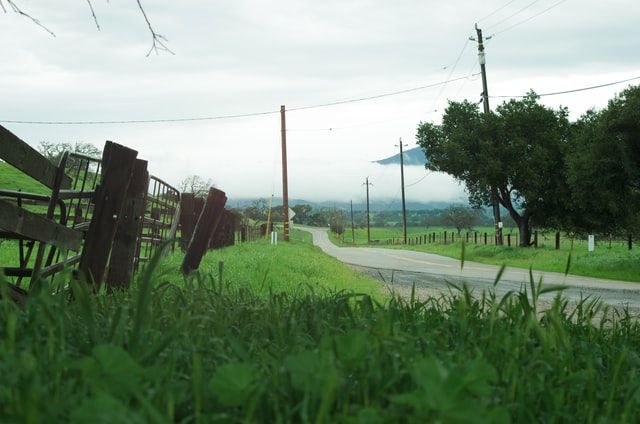
▶︎ Scenario one: A client injured her leg in December while skiing. She was annoyed since she needed to pay for two years worth of health insurance deductibles for her surgeries.
▶︎ Scenario two: A pal injured his leg and didn’t have health insurance. He needed to go to the emergency room for surgeries and then declared personal bankruptcy since he didn’t have enough money.
The person in scenario one stored money aside to pay her medical insurance deductibles. Thus, she focused on healing herself.
The person in scenario two did not have money put aside. His life then went into chaos. He moved to a more affordable city. He got a new job in this new city. He adjusted his lifestyle so he could rebuild his life, credit, and financial foundation. And worst of all, this person felt defeated.
Now, other than health insurance, what’s the biggest difference between these two? An emergency fund.
- AKA a rainy day fund
- AKA an uh-oh fund
- AKA a sh*t happens fund
The person in scenario two isn’t alone. In 2018, the Federal Reserve reported,
“Relatively small, unexpected expenses, such as car repair or replacing a broken appliance, can be a hardship for many families without adequate savings. When faced with a hypothetical expense of $400, 61% of adults in 2018 say they would cover it, using cash, savings, or a credit card paid off at the next statement… Among the remaining 4 in 10 adults who would have more difficulty covering such an expense, the most common approaches include carrying a balance on credit cards and borrowing from friends or family. 12% of adults would be unable to pay the expense by any means.”
My challenge to you: Your first priority for a healthy financial foundation is to set up your emergency fund!
How To Define Your Uh-Oh Fund
I asked a client this question: “With the money you’ve saved, how many months of livelihood expenses would that cover if you lost your income?”
▶︎ His answer: “That’s a good question. I never really thought about it.”
Your emergency fund can pay for a medical emergency, a plane ticket for a funeral, a busted tail light on your car, and any other life responsibility. However, this fund can be your lifeline if you suddenly lose your income. You can then pay for your livelihood expenses.
Livelihood expenses = money to keep you alive, healthy, and to keep/gain your income.
▶︎ Examples: Shelter, Basic Food, Transportation, Medical, Basic Bills (Insurance, Utilities, Internet, etc.), and Job Keeping/Searching Expenses
Dollar Amounts For Your Emergency Fund
Everyone has a unique situation, but here’s a chart displaying general guidelines to consider so you can proactively prepare for life’s curveballs.
To explain the chart below, reliable income refers to individuals who obtained steady employment with predictable paychecks or cash flows. This category includes W-2 employees and business owners who have reliable month-to-month revenue.
Unpredictable income refers to income that fluctuates month to month and isn’t as reliable as employment. This category includes gig workers, independent contractors, some business owners, and others who have unpredictable month-to-month incomes.
As you can see, the more unpredictable your income, the more we recommend for your emergency fund.

Trust your gut for what’s appropriate in your situation. Factors to consider: mortgages, other debts, safety nets (like helpful family members), special needs children, and the list goes on and on.
▶︎ Another tip: Instead of underfunding this account, try to overfund by a slight amount.
Designate a Separate Account
Most people are “winging it” with their savings by lumping all of their money in one big account. This account is for their day-to-day living, a future down payment for a house, retirement, vacations, holiday spending, and for emergencies.
Hmmm … is this really the best approach?
Create a separate account for your emergency fund versus just trusting that a portion of your overall checking account is for emergencies. Money in your checking account is too tempting to spend. Ask your bank to open a free separate savings account so you can isolate money for emergencies.
It’s important to have this money sitting in cash or as other liquid assets. You want access to this money immediately if life demands it. There should be few barriers between you and access to this money.
Setting up your emergency fund
▶︎ Determine your livelihood costs.
▶︎ Identify a target savings amount (reference the chart in the previous section).
▶︎ Locate an appropriate high-yield savings account to stash this cash. (Look at Bankrate and Nerdwallet for the pros-and-cons of different options.)
▶︎ Deposit a large amount to open the account.
▶︎ Then set up automatic transfers from your checking account so you can reach your target savings goal.
▶︎ High five yourself for setting up the first step in a successful financial foundation!
Once you know your target dollar amount, set up an automatic savings plan into your uh-oh fund. Learn how to do this in Trick Yourself to Save Money.
Don’t Cook Meth
Remember that Walter White from “Breaking Bad“ resorted to cooking meth to take care of his family after his cancer diagnosis because he didn’t have an emergency fund. And look what happened to him! If you haven’t seen the TV series, you can presume Mr. White’s outcomes weren’t ideal.
Upgrade your mindset to become intentional when building your emergency fund. A major benefit to this strategy: Once you reach your savings goal, you can direct your money elsewhere with the peace of mind that you’re handling your basic responsibilities!
This article gives you a glimpse of the “Your Emergency Fund” module. Access these personal finance modules by becoming a client.
Photo by Jarryd Wafer on Unsplash
